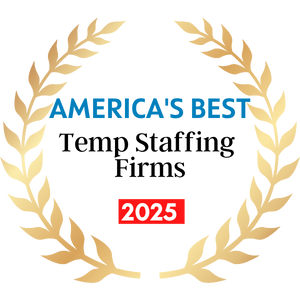After years of remote and hybrid work models, many organizations are reintroducing in-person expectations—some fully, others in part. For job seekers, this trend brings questions about flexibility, commute expectations, and workplace culture. For employers, it presents both opportunities and challenges: how to rebuild office energy, re-engage teams, and attract talent that values in-person connection.
The return to the office in 2025 is not a return to the past—it’s a reset. And understanding how to navigate this shift is critical for both sides of the hiring equation. Whether you’re a company refining your policies or a candidate weighing your options, here’s what you need to know about today’s evolving in-person work landscape.
Why Employers Are Calling Teams Back to the Office
The remote revolution offered countless benefits—broader talent pools, reduced overhead, and improved work-life balance. But it also came with limitations: lower engagement for some teams, siloed communication, and challenges onboarding new hires.
As a result, many organizations are shifting toward a more intentional return to the workplace. The reasons include:
-
Collaboration and innovation: In-person environments can foster quicker problem-solving, spontaneous brainstorming, and cross-functional connection.
-
Team cohesion and culture: Leaders want to rebuild the culture and camaraderie that come from shared physical spaces.
-
Professional development: New hires and junior employees benefit from proximity to experienced mentors and hands-on learning opportunities.
-
Client expectations: Some businesses work with customers who value in-person interaction and on-site presence.
However, the best return-to-office strategies are not one-size-fits-all—they’re flexible, inclusive, and focused on outcomes, not just presence.
What Job Seekers Are Looking For
For many professionals, remote work isn’t just a convenience—it’s a priority. Candidates are evaluating job opportunities through a new lens that considers lifestyle, autonomy, and how work fits into life, not the other way around.
Today’s job seekers expect:
-
Workplace flexibility: While some are ready to return to the office, many prefer hybrid schedules or want to work remotely full-time.
-
Transparency about expectations: Candidates want clarity on how often they’re expected to be on-site, how performance is measured, and whether flexibility is truly supported.
-
Support for transition: If a role requires in-office work, candidates expect support with commuting costs, relocation options, or transitional flexibility.
-
Purposeful in-person work: Job seekers are more likely to commit to office time if it’s meaningful—team building, training, or collaborative projects—rather than mandated desk time.
Ultimately, candidates want choice, communication, and a workplace that respects their time and contributions—whether that’s remote, hybrid, or in-person.
How Employers Can Attract Talent in a Post-Remote World
As in-person work makes a comeback, employers must be thoughtful about how they position their roles and company culture. Here’s how to make in-person opportunities more attractive to modern job seekers:
1. Lead with Purpose, Not Policy
Instead of mandating attendance, explain the why behind your return-to-office strategy. Candidates want to know how in-person work benefits them and how the company makes it worthwhile.
2. Offer Hybrid Options Where Possible
Even two to three days of flexibility per week can make a difference. Hybrid models continue to be the most attractive arrangement for professionals who value both autonomy and collaboration.
3. Create a Destination, Not Just an Office
Modern employees want more than fluorescent lights and cubicles. Offer spaces that are collaborative, comfortable, and designed for focus and creativity. Perks like wellness programs, quiet zones, and access to leadership help create a workplace people want to return to.
4. Be Transparent from Day One
Set clear expectations in job descriptions, interviews, and onboarding. Misalignment about work location is one of the top reasons candidates turn down offers or leave new roles early.
5. Invest in Re-Onboarding and Culture
If your team has been remote for a while, returning to the office is a change worth managing carefully. Host welcome-back events, reintroduce company values, and build new traditions that fit your hybrid or in-person future.
How Candidates Can Navigate the Shift Back to the Office
If you’re a job seeker considering in-person opportunities, the transition can feel overwhelming—especially if you’ve grown accustomed to working remotely. Here’s how to assess new roles and advocate for your needs:
1. Ask the Right Questions in Interviews
-
What is the company’s return-to-office policy?
-
Is the schedule fixed or flexible?
-
How are remote and hybrid workers included in team communication?
-
What tools or benefits are offered to support in-office employees?
The more you know up front, the more confident you’ll feel about your decision.
2. Understand Your Own Priorities
Do you miss being around people? Are you motivated by a structured environment? Or do you value flexibility above all? Knowing your preferences helps you evaluate offers more effectively.
3. Prepare for a Gradual Shift
If you’ve been fully remote, give yourself time to adjust. Start with a hybrid role or ask for a transitional schedule to reacclimate. Be open—but also honest about what works best for your lifestyle and productivity.
4. Rebuild In-Person Habits
The rhythm of in-office work is different. From commuting to team lunches to impromptu meetings, your day may be fuller than you’re used to. Plan ahead, set boundaries, and find new routines that keep you focused and balanced.
What the Future of In-Person Work Looks Like
The return to in-person work isn’t a reversal of progress—it’s a reimagining. Offices are becoming more flexible, collaborative, and human-centric. The future is likely to include:
-
Hybrid-first organizations where office time is meaningful, not mandatory
-
Remote roles with in-person offsites or team summits for connection
-
Flexible hours, asynchronous communication, and results-based performance metrics
-
Workspaces designed for well-being, creativity, and learning—not just supervision
In other words, it’s not about where you work—it’s about how and why you work.
Building Workplaces That Work for Everyone
In 2025, the most successful employers and job seekers will be those who embrace flexibility, transparency, and mutual respect. Whether you’re returning to the office full-time, choosing hybrid, or exploring new roles altogether, understanding the evolving expectations around in-person work is essential to long-term success.
At Burnett Specialists, we work with both companies and candidates to find the right fit—whether that means in-office, remote, or somewhere in between. Our team can help you navigate the changing landscape with confidence and clarity.
Visit Burnett Specialists to explore job opportunities, hiring strategies, and expert support tailored to today’s workforce needs.









